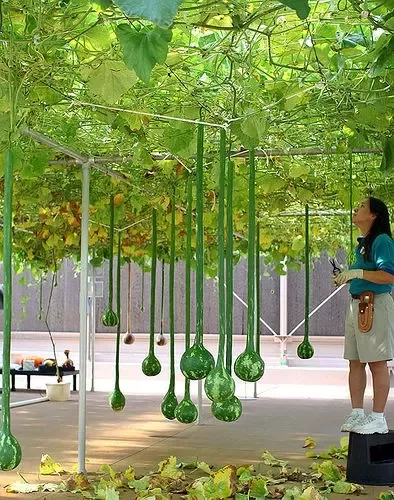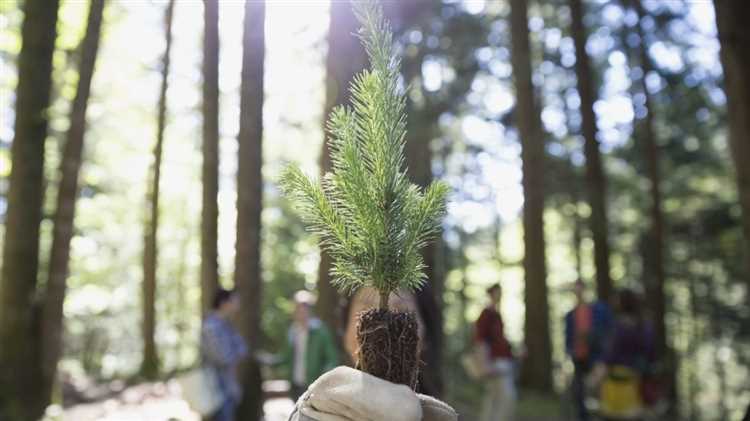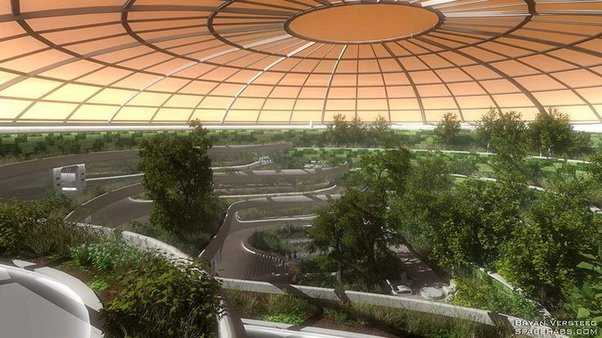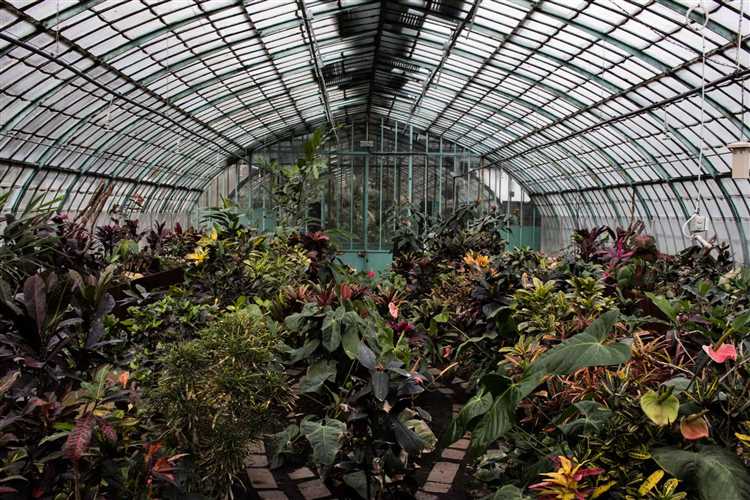
The idea of planting trees on Mars might seem like something out of a science fiction novel, but scientists and researchers are seriously considering it as a possibility. With the goal of creating a sustainable and habitable environment on the red planet, planting trees could have numerous benefits. However, there are also significant challenges that need to be overcome before this dream can become a reality.
One of the main reasons for planting trees on Mars is to produce oxygen. Trees are known for their ability to convert carbon dioxide into oxygen through the process of photosynthesis. By introducing trees to Mars, we could kickstart the process of creating a breathable atmosphere for future human colonization. The oxygen produced by the trees would not only support human life but also provide a resource for rocket fuel and other industrial purposes.
Another benefit of planting trees on Mars is the potential for terraforming. Terraforming involves altering the environment of a planet to make it more Earth-like and hospitable. By introducing vegetation, the trees could help regulate the planet’s temperature, increase humidity, and reduce the levels of toxic gases in the atmosphere. Over time, this could lead to the creation of a more livable and sustainable environment for both humans and other forms of life.
- Exploring New Horizons
- The Importance of Trees
- The Challenges Ahead
- Conclusion
- Surviving in the Harsh Environment
- The Benefits of Martian Greenery
- 1. Oxygen Production
- 2. Food and Resources
- Overcoming the Gravity Barrier
- Developing Sustainable Solutions
- 1. Nutrient-rich Soil and Fertilizers
- 2. Controlled Atmosphere Enclosures
- 3. Water Conservation and Recycling
- 4. Energy Sources
- Unlocking the Potential of Mars
- Question-answer:
- Is it possible to plant trees on Mars?
- What are the challenges of planting trees on Mars?
- How can trees survive on Mars without an atmosphere?
- What benefits could planting trees on Mars bring?
Exploring New Horizons

As humanity continues to push the boundaries of exploration, the possibility of planting trees on Mars is an exciting prospect. With recent advancements in space technology and the discovery of potential water resources on the planet, the dream of making Mars a habitable and sustainable environment is becoming closer to reality.
The Importance of Trees
Trees play a crucial role in our lives on Earth, and their presence on Mars could have a multitude of benefits. Firstly, trees are the primary source of oxygen, releasing the vital gas through photosynthesis. By introducing trees to Mars, we could begin to create an atmosphere suitable for human life.
Furthermore, trees have the ability to absorb carbon dioxide, a greenhouse gas that contributes to climate change. The presence of trees on Mars could help mitigate the effects of greenhouse gases and potentially create a more stable climate on the planet.
The Challenges Ahead
While the idea of planting trees on Mars is exciting, there are significant challenges that must be overcome. The harsh Martian environment poses a number of obstacles, including extreme temperatures, high levels of radiation, and low atmospheric pressure.
Additionally, the lack of liquid water on the surface of Mars presents a challenge for tree growth and survival. Water is essential for the survival of all living organisms, and finding a sustainable water source on Mars will be crucial for the success of any future tree planting missions.
Furthermore, the soil on Mars is vastly different from that on Earth, lacking essential nutrients and organic matter. Before trees can be planted, scientists will need to find ways to enrich the Martian soil and create suitable conditions for tree growth.
Conclusion
The prospect of planting trees on Mars is an exciting and ambitious endeavor that could have significant implications for the future of humanity. While there are numerous challenges to overcome, advancements in technology and ongoing research are bringing us closer to making this dream a reality. By exploring new horizons and pushing the boundaries of what is possible, we can continue to expand our understanding of the universe and potentially create a sustainable future for ourselves on Mars.
Surviving in the Harsh Environment

Surviving in the harsh environment of Mars is a tremendous challenge that must be overcome in order to successfully plant trees on the planet. Mars is known for its extremely low temperatures, lack of breathable atmosphere, and high levels of radiation. Here are some of the key factors that would have to be addressed:
- Temperature: Mars has an average temperature of -80 degrees Fahrenheit (-62 degrees Celsius), which is far too cold for most plants to survive. Specialized heating systems and insulation would be necessary to keep the trees warm enough to survive.
- Atmosphere: Mars has a thin atmosphere composed mostly of carbon dioxide, with very little oxygen. This presents a challenge for plants, as they require carbon dioxide for photosynthesis and oxygen for respiration. Creating a controlled environment with proper oxygen levels would be crucial.
- Water: Water is essential for the survival of plants, but Mars has very limited water resources. Finding a sustainable source of water would be crucial, whether it’s through existing ice reserves or by developing technologies to extract water from the Martian soil.
- Soil: The soil on Mars, known as regolith, is vastly different from Earth’s soil. It is lacking in essential nutrients and organic matter, making it difficult for plants to obtain the necessary nutrients. Scientists would have to develop methods to enrich the soil and provide the necessary nutrients for plant growth.
- Radiation: Mars is exposed to high levels of solar radiation due to its thin atmosphere and lack of a protective magnetic field. Radiation can be harmful to plants and could inhibit their growth. Developing shielding mechanisms or genetically engineering plants to be more resistant to radiation would be essential.
While the challenges of surviving in the harsh Martian environment are formidable, scientists and researchers continue to explore various solutions and technologies to make planting trees on Mars a reality. Overcoming these challenges would not only bring us closer to establishing a self-sustaining colony on Mars but also provide valuable insights into how life can adapt and survive in extreme environments.
The Benefits of Martian Greenery
Planting trees on Mars may seem like a far-fetched idea, but it could bring about a multitude of benefits that would make colonizing the planet much more feasible. The presence of greenery on Mars would not only enhance the aesthetics of the Red Planet, but it could also have a profound impact on the potential habitability and sustainability of a Martian colony.
1. Oxygen Production
One of the most crucial benefits of growing trees on Mars is the production of oxygen. Trees are known for their ability to absorb carbon dioxide and release oxygen through the process of photosynthesis. This could provide colonists with a sustainable source of fresh air, eliminating the need to constantly import oxygen from Earth.
2. Food and Resources

Another advantage of Martian greenery is the potential for growing food and utilizing other resources. Plants can be cultivated to provide a variety of fresh produce, offering a sustainable food source for the colonists. Additionally, trees can be utilized for their wood, which could be used for construction and other purposes.
| Benefits of Martian Greenery |
|---|
| Oxygen Production |
| Food and Resources |
Overall, the presence of vegetation on Mars would have numerous benefits for a Martian colony. From oxygen production to a sustainable food source and resource utilization, planting trees could greatly enhance the livability and self-sufficiency of the Red Planet.
Overcoming the Gravity Barrier
Planting trees on Mars presents a unique challenge: the planet’s gravity is only 38% of Earth’s. This lower gravitational force has significant implications for the growth and development of trees.
Firstly, the reduced gravity affects the way trees anchor themselves to the ground. On Earth, trees use their root systems to support their weight and stay upright. However, on Mars, the lower gravity means that trees need to develop stronger and denser roots to remain stable. Engineers and scientists would need to find ways to engineer tree root systems that can adapt to the reduced gravity and provide enough stability for the trees to thrive.
In addition to anchoring, the lower gravity on Mars also affects the transportation of water and nutrients within the trees. On Earth, trees use a system called xylem to transport water and nutrients from their roots to the leaves. The lower gravity on Mars could disrupt this system, causing water and nutrients to flow unevenly and potentially affecting the growth and health of the trees. Scientists would need to develop new strategies and technologies to ensure the efficient transportation of water and nutrients within trees in the Martian environment.
The reduced gravity on Mars also has implications for the structural integrity of trees. On Earth, trees develop strong trunks and branches to support their weight against the force of gravity. However, on Mars, with its lower gravitational force, trees would need to adapt and develop different structural features to withstand the conditions. Scientists and engineers would need to study the effects of Mars’ gravity on tree structures and perhaps develop new materials and designs to ensure their stability and strength.
Overcoming the gravity barrier on Mars is a challenge that requires innovative thinking, collaboration between scientists and engineers, and a deep understanding of the unique properties of Martian conditions. By studying and developing solutions for the anchoring, transportation, and structural integrity challenges posed by the lower gravity, we can pave the way for successful tree growth and colonization on the red planet.
Developing Sustainable Solutions
As humanity explores the possibility of planting trees on Mars, it is crucial to consider the development of sustainable solutions to support life and ensure the long-term survival of the plant life on the planet.
1. Nutrient-rich Soil and Fertilizers
One of the key challenges of growing trees on Mars is the lack of nutrient-rich soil. Therefore, developing soil mixtures that can provide essential nutrients to the plants is crucial. Scientists are working on creating synthetic fertilizers that can replicate the nutrients found in Martian soil, to ensure the healthy growth of trees.
2. Controlled Atmosphere Enclosures
Growing trees on Mars would require controlled environment enclosures to mimic the conditions on Earth as closely as possible. These enclosures would need to have regulated temperature, humidity, and air composition to provide the necessary conditions for plant growth. Utilizing advanced technology and climate control systems would be essential in maintaining a sustainable habitat for the trees.
3. Water Conservation and Recycling
Water is a scarce resource on Mars, and it would be essential to develop methods for conserving and recycling water for the trees. This could involve capturing and purifying water from the atmosphere, as well as recycling water used for irrigation. Implementing efficient water management systems would be vital to ensure the sustainability of the ecosystem.
4. Energy Sources
Providing sustainable energy sources on Mars is crucial for maintaining the growth of trees. Solar power could be a viable option for generating electricity, as Mars receives abundant sunlight. Developing efficient solar panels and storage systems would be essential for meeting the energy demands of the habitat and sustaining the growth of the trees.
In conclusion, developing sustainable solutions is crucial for planting trees on Mars and creating a viable ecosystem. By addressing challenges such as nutrient-rich soil, controlled environment enclosures, water conservation, and energy sources, scientists are paving the way for the future colonization of Mars and the potential for a self-sustaining ecosystem.
Unlocking the Potential of Mars
Mars, often referred to as the “Red Planet,” has long captured the imagination of scientists, astronomers, and space enthusiasts alike. With its similar geological features to Earth and a potential history of water, Mars presents an exciting opportunity for exploration and even colonization.
One of the key factors in unlocking the potential of Mars is the establishment of a sustainable ecosystem. This involves not only sending humans and supplies to the planet but also finding ways to create a self-sustaining environment where future generations can thrive.
Planting trees on Mars could play a crucial role in this endeavor. Trees produce oxygen through photosynthesis, which is essential for human habitation. Additionally, trees can help regulate the planet’s temperature, reduce soil erosion, and provide valuable resources such as wood for construction or fuel.
However, there are numerous challenges to overcome when it comes to planting trees on Mars. The planet’s thin atmosphere, extreme temperatures, and high levels of radiation pose significant obstacles. Scientists are currently working on developing new techniques and technologies to address these challenges.
One approach being explored is the use of specially designed habitats or greenhouses to create a controlled environment for plants to grow on Mars. These structures would provide the necessary protection from the harsh conditions while also allowing for the regulation of temperature, air pressure, and radiation levels.
Another challenge is the availability of water on Mars. While there is evidence of water ice on the planet, it would need to be extracted and purified for use in growing plants. This could be achieved through various methods, such as melting ice or extracting water vapor from the atmosphere.
Overall, planting trees on Mars holds great potential for transforming the planet into a habitable world. By harnessing the power of nature and finding innovative solutions to the challenges at hand, humanity could unlock the full potential of Mars and pave the way for future exploration and colonization.
Question-answer:
Is it possible to plant trees on Mars?
Yes, it is possible to plant trees on Mars with the right technology and resources.
What are the challenges of planting trees on Mars?
There are several challenges to planting trees on Mars, including the lack of atmosphere and water, extreme temperatures, and the need for specialized soil and nutrients.
How can trees survive on Mars without an atmosphere?
Trees would need to be housed in controlled environments, such as habitats or greenhouses, with the necessary conditions provided, including oxygen, temperature regulation, and protection from radiation.
What benefits could planting trees on Mars bring?
Planting trees on Mars could help to create a sustainable environment, provide oxygen and food for future human colonies, and contribute to the terraforming process to make the planet more habitable.